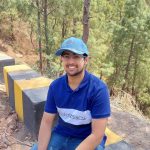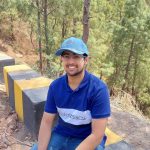Hybrid AI-powered computer vision combines physics and big data
SOURCE: HTTPS://WWW.SCIENCEDAILY.COM/
AUG 14, 2023
Deepkapha AI Researchers Propose ‘VeerNet,’ A Novel Transformer-Based Deep Learning Network That Uses Self-Attention Processes To Recognize Distinct Curves From A Single Track
SOURCE: MARKTECHPOST.COM
OCT 23, 2022

Well-logging is the process of using drilling instruments to take measurements of various rock qualities throughout the length of a well down into the earth. The formation’s lithology, porosity, fluid content, and textural variance determine the digital log responses. The welllogging parameters generate lithofacies groups and facies-by-facies rock property descriptors. Before the introduction of digital logging tools, well-logging data were drawn in curve format on the parameter graph. Well-logging parameter graphs have several drawbacks, including their vast size, abundant memory space, and interference from gridlines. Therefore, it is necessary to translate well-logging parameter graphs into X-Y coordinates, where X stands for parameter values and Y for depth values.
Raster logs are picture files created by scanning paper logs. Saving well-log data as depth-calibrated raster pictures is a cost-effective alternative to digital formats to preserve this essential information. Although raster imaged well logs are frequently deleted after vectorization, they may hold the key to a worldwide computer-readable design for legacy hardcopy data. This legacy data is maintained on many media and provides information for various purposes, including environmental protection, water management, global change studies, primary and applied research, and resource exploitation and development.
Geologists and reservoir engineers, for example, return and analyze these raster logs manually or using software solutions that require a significant amount of human input. Aside from wasting thousands of person-hours, the current method is incorrect and time-consuming. To digitize these raster logs and use them efficiently in conventional and unconventional analysis, one must purchase an expensive digitizer, which is a manual and time-consuming task. There is also a hidden technical debt since businesses risk losing money on further service and consulting fees. SCTR is the foundation of the commercially available logging curve digitizing program Neuralog. However, this program frequently stalls during curve tracking due to interference from the backdrop grid.
Many unsupervised computer vision approaches have been created to digitize the log data included in the binary picture. There are two ways to well-log digitization: pixel-based methods and non-pixel-based methods. The thinning procedure and the Global Curve Vectorization approach are both pixel-based methods. The thinning system reduces the width of a line to one pixel, leaving just the skeleton to represent its properties. The thinning process is time-consuming, loses line width information, and is prone to distortion and improper branching at junctions. The GCV approach is suitable for line processing but not so good for point-line processing. Non-pixel-based methods are broadly classified into two types: contour-based and adjacency graph-based.
The contour-based technique first involves extracting the image’s contour and locating matching contour pairings. The adjacency graph technique begins by encoding graphs with run-length encoding, then analyses the segments and constructs different adjacency graph structures, such as line adjacency graph and block adjacency graph, using the SCTR methodology and the LAG data structure. Yang enhanced the SCTR approach and proposed the PCTR method. Based on BAG, Yuan and Yang devised a plan for deleting grid lines and restoring strokes in Chinese handwriting. However, such approaches are difficult to apply when dealing with complicated scenarios in well-logging parameter graphs, particularly node analysis. Yuan and Yang employed morphological image processing and pixel statistics to isolate the curves and gridlines.
The remaining grid lines and noise spots are then cleared based on the modest size of their related components. However, all of the present techniques need manual involvement, which is not ideal, especially when the paper logs are more extensive than 10 MB. This research from Deepkapha.ai and IIT Kharagpur researchers propose VeerNet, a novel transformer-based deep learning network that uses self-attention processes to recognize distinct curves from a single track. The simple design of transformers allows for processing several modalities utilizing comparable processing blocks.
Transformers scale well to large-scale deep neural networks and massive datasets. These advantages have resulted in impressive progress on various vision tasks employing Transformer networks Khan et al. They train their model on synthetic and actual raster logs. VeerNet performs with a precision of 0.94, 0.48, and 0.39 in the multi-segmentation model of digitizing a track with three curves. The accuracy of the VeerNet trained on accurate data is 0.6 for three curves.
Finally, their proposed approach for digitizing raster well-log pictures is simpler and requires less manual involvement than previous solutions. The solution is also quick and scalable. They have developed VeerNet, a deep learning network that can effectively recognise well-log curves and attain a classification accuracy of more than 35%. The model can distinguish well-log curves from the background grid precisely, which improves on previous technologies.
This Article is written as a research summary article by Marktechpost Staff based on the research paper 'Digitization of Raster Logs: A Deep Learning Approach'. All Credit For This Research Goes To Researchers on This Project. Check out the paper.Please Don't Forget To Join Our ML Subreddit

Aneesh Tickoo is a consulting intern at MarktechPost. He is currently pursuing his undergraduate degree in Data Science and Artificial Intelligence from the Indian Institute of Technology(IIT), Bhilai. He spends most of his time working on projects aimed at harnessing the power of machine learning. His research interest is image processing and is passionate about building solutions around it. He loves to connect with people and collaborate on interesting projects.
LATEST NEWS
WHAT'S TRENDING


Data Science
5 Imaginative Data Science Projects That Can Make Your Portfolio Stand Out
OCT 05, 2022

SOURCE: HTTPS://WWW.SCIENCEDAILY.COM/
AUG 14, 2023
SOURCE: INDIANEXPRESS.COM
OCT 24, 2022